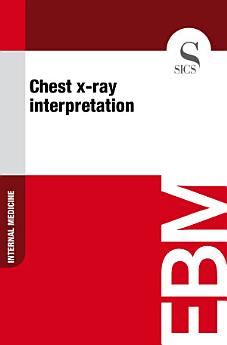Chest x-ray interpretation
Oct 2014 · SICS Editore
5.0star
1 reviewreport
eBook
45
Pages
family_home
Eligible
info
reportRatings and reviews aren’t verified Learn more
About this eBook
When examining the picture, use an adequate light table or picture monitor. Do not examine x-rays, for example, against a window. The background lighting should be dim. Always compare present abnormalities with findings in earlier x-rays if they are available. Was the abnormality present already in the earlier x-ray? Has it become larger or declined? Interpretation of the chest x-ray is not simple. Ask for interpretation by a radiologist if necessary. A chest x-ray that appears normal at first sight may hide significant pathology, e.g. behind the heart, mediastinum or diaphragm. Erroneus interpretation of an x-ray image is often associated with problems of perception. Many normal structures (e.g. cross-sections of blood vessels) and/or their superimposed projections may also cause false positive interpretations. The radiation dose from a chest x-ray is rather low (postero-anterior x-ray about 0.03 mSv, corresponding to 3 days’ natural background radiation, and lateral x-ray about twice as much).
Ratings and reviews
5.0
1 review
Rate this eBook
Tell us what you think.
Reading information
Smartphones and tablets
Install the Google Play Books app for Android and iPad/iPhone. It syncs automatically with your account and allows you to read online or offline wherever you are.
Laptops and computers
You can listen to audiobooks purchased on Google Play using your computer's web browser.
eReaders and other devices
To read on e-ink devices like Kobo eReaders, you'll need to download a file and transfer it to your device. Follow the detailed Help Centre instructions to transfer the files to supported eReaders.








